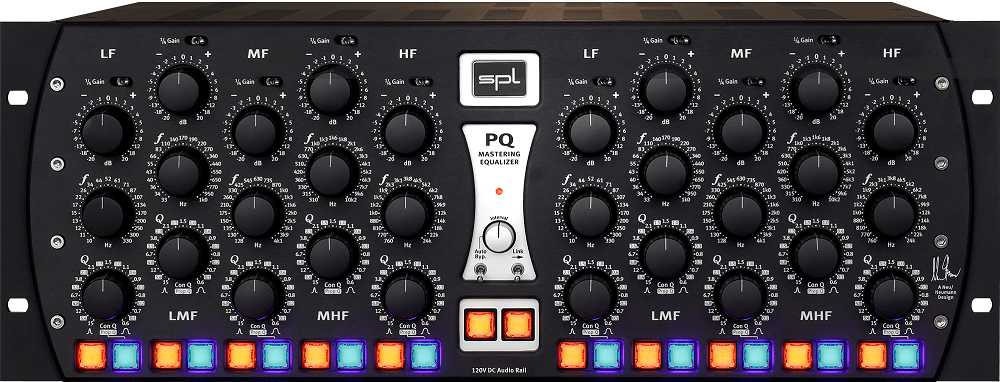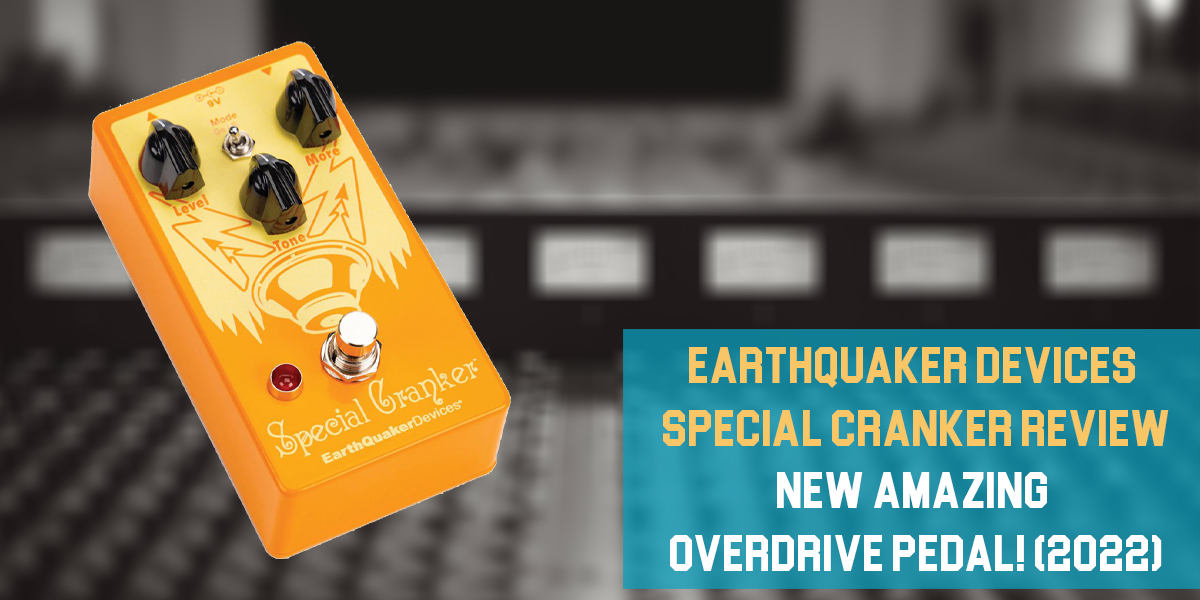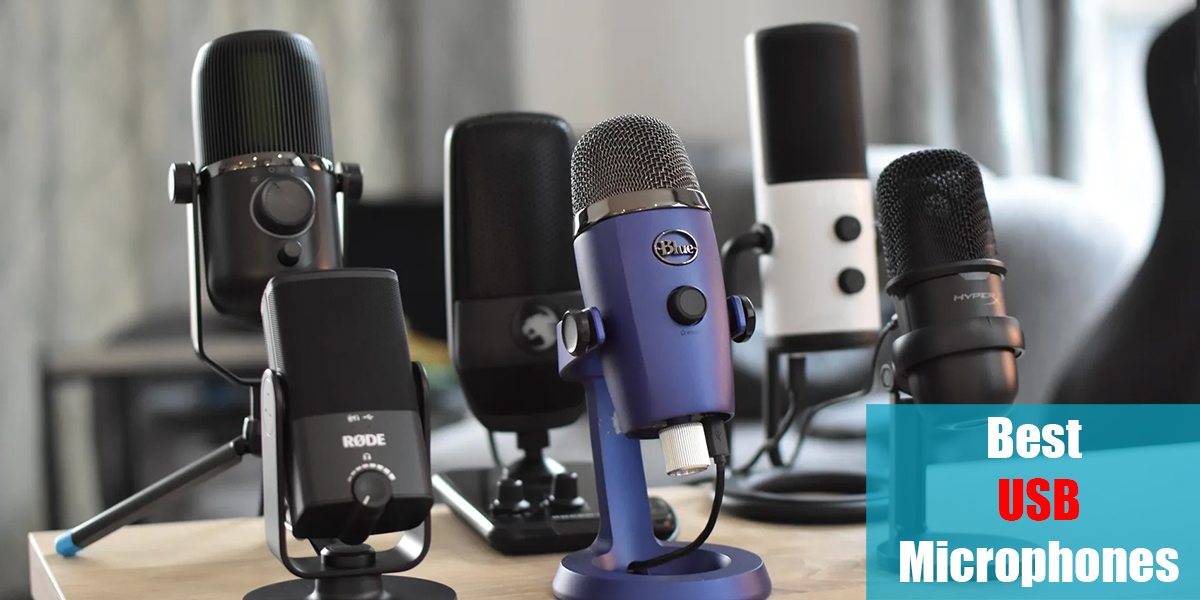Best Mastering Equalizers
Introduction
Mastering is the final stage any piece of music goes through before being released on streaming platforms or physical media. It’s the last opportunity to add professional polish to a recording and make it engaging for listeners. In practice, effective mastering comes down to skill, experience, and having the right tools at your disposal.
Equalization is undoubtedly one of the main tools in the mastering process. It’s used to add warmth, “air,” and tonal balance to a track. EQ is also crucial for fixing problems like certain frequencies that are too loud and overpower the rest of the mix.
Professional mastering engineers rarely cut or boost any frequency by more than 1.5 dB. They know that even a small adjustment can greatly impact the final sound. You should follow the same approach: work in increments of half a dB or less (ideally 0.25 dB), and listen closely to how your tweaks—sometimes more noticeable by feel than by ear—change the overall sound.
When applying EQ to your master, it’s important to know exactly what you’re doing, how your changes are affecting the signal, and how different equalizers can offer unique and useful results.
Just so you know, we’ll list these Best Mastering Equalizers reviews in no particular order. They’ll be randomized, as we don’t want to rank them from best to worst.
Listed below are our Top 9 Mastering Equalizers:
1. SPL PQ Black
The SPL PQ Master Equalizer is a fully parametric, dual-channel, five-band equalizer. It supports both stereo and dual-mono operation, with five independent bands per channel. Each band can be individually activated and switched on or off.
An Auto-Bypass mode lets you stay in the sweet spot of your monitoring setup and easily compare your changes, as the system automatically toggles between processed and unprocessed signals at an interval you choose. The EQ also features 120V Rail Technology, which delivers mastering-quality performance in terms of headroom, dynamic range, and detailed sound reproduction.
The PQ Mastering Equalizer is designed as a true dual-channel equalizer, so you can process two completely different mono signals at once. Alternatively, you can process a stereo signal by using the link button, which allows you to control both channels together from the right channel.
For each band, the frequency bandwidth can be set to remain constant, or to change depending on how much you cut or boost the signal. In constant-Q mode, the selected bandwidth stays the same regardless of the amplitude setting, making it ideal for corrective work.

SPL PQ Black |
|
2. Chandler Limited EMI TG 12345 Curve Bender
The EMI TG12345 Curve Bender is the ultimate TG equalizer, created in celebration of Abbey Road Studios. Designed by Wade Goeke of Chandler Limited, the Curve Bender is based on the classic EMI TG12345 desk that was used to record legendary artists like The Beatles and Pink Floyd. This latest EMI equalizer continues a proud tradition that began with the RS57 in 1954, the TG12345 in 1969, and the TG12412 in 1974.
Wade expanded the classic model’s nine settings into an impressive 51 EQ points, plus a multiply switch that increases the cut/boost range up to ±13.5dB—and sharpens the Q as well. You also get filters and bell/shelf options on the high and low bands for even more flexibility.
The Chandler Curve Bender is a serious, high-end piece of gear for critical applications and discerning professionals. Take a cue from the legends and let the Chandler Curve Bender transport your sound to the dark side of the moon.
Tonally, the Chandler Curve Bender can completely reinvigorate your mixes—bringing out definition, warmth, and detail you might not have even realized were missing. This speaks to the quality, craftsmanship, and meticulous attention to detail that Chandler Limited is known for. Ultimately, it’s all about musicality, and the Curve Bender delivers that in spades.

Chandler Limited EMI TG 12345 Curve Bender |
|
3. API Audio 5500 Dual Equalizer
The 550 was originally designed as a console equalizer, utilizing an unbalanced input to fit the structure of recording consoles. Because console ergonomics require controls to take up minimal space, the number of functions included is often limited.
One especially useful feature in the 5500 is the variable control. The range of the amplitude controls can be reduced to 1/2 or even 1/4 of their stated scale, allowing for finer adjustments to tonal balance with greater precision and subtlety. This is particularly beneficial for handling complex program material, such as stems or submixes, making it ideally suited for mastering applications.
API’s 5500 also features a true hard-wire bypass, which connects the output directly to the input. When this bypass is engaged or disengaged, a special circuit enables “bypass mode” so that power thumps are never heard, protecting your audio chain from unwanted noise.
The 5500 was specifically designed to address these limitations: it offers a balanced input, a true straight-wire bypass, a built-in power supply with noiseless muting, and a variable control that extends its versatility for mastering. The 5500 comes with API’s industry-exclusive five-year parts warranty and is built with the reliability and long life you expect from all API products.

API Audio 5500 Dual Equalizer |
|
4. Heritage Audio SYMPH EQ Master Bus Stereo EQ
The Baxandall equalizer topology, introduced to the public by Peter Baxandall in 1952, was a breakthrough way to achieve both high and low shelves with boost and cut options—without the need for costly rotary switches. This affordable circuit was quickly adopted by hi-fi and console manufacturers for its simplicity, especially where parametric options weren’t necessary.
Heritage Audio has successfully reimagined the Baxandall topology with a practical and even more musical version, implemented in a one-rack-space, master bus/mastering-style unit. Its sound can only be described as tight, sweet, and pure, and the use of parallel equalization to achieve the desired response curves results in exceptionally low phase deviation and minimal artifacts.
To keep both the sub-low and ultra-high frequencies in check, additional high-pass and low-pass filters have been included on dual concentric rotary switches, each offering 12dB/octave slopes. Both filters provide five selectable frequency options plus an OFF setting.
Nothing compares to M/S equalizing a mix. It allows you to process the center and the sides independently. The benefits of this approach are hard to overstate: you can brighten your mix without making the vocals harsh, or tighten the stereo image’s bass content without making your bass or kick sound weak!

Heritage Audio SYMPH EQ Master Bus Stereo EQ |
5. Maag Audio EQ4M Mastering 6-band Parametric Equalizer
The EQ4M is Mäag Audio’s flagship mastering equalizer. It’s based on the company’s original 6-band NTI EQ3, and like that classic 2U equalizer, the 1U EQ4M also features Cliff Mäag’s unique and renowned Air Band shelving equalizer, first introduced in 1993 with the NTI EQ3.
The EQ4M has earned high praise as “the most musical-sounding equalizer ever made” thanks to its classic design, high-quality components, and powerful high-voltage power supply. Powered by an internal, high-current +/-18-volt regulated supply, the EQ4M delivers a maximum output level of +28.5 dBu, even when driving 600-ohm load impedances.
Each channel of the EQ4M features six EQ band sections. These include four fixed-frequency bell-shaped equalizer sections, a 2.5 kHz shelving EQ section, and the Air Band equalizer with two selectable frequencies. The five main frequency bands are Sub or 10 Hz, 40 Hz, 160 Hz, 650 Hz, and the 2.5 kHz shelving EQ.
All EQ sections provide a boost/cut range of +15 dB to -4.5 dB, with a center detent at 0 dB. The Air Band section has its own bypass button, and there are separate hardwire bypass switches for each channel.

Maag Audio EQ4M Mastering 6-band Parametric Equalizer |
6. Bettermaker Mastering Equalizer
The Bettermaker Mastering EQ is a powerful analog mastering equalizer that combines a stereo Pultec-style EQ with a three-band parametric EQ, a high-pass filter, and advanced features like USB connectivity, total recall, and a 5-inch multi-touch touchscreen for easy operation.
Inspired by the innovative EQ232p, the Bettermaker Mastering EQ features both a Pultec model and a parametric section, but adds an extra parametric band and shelving options for the two outer bands. Both shelves offer up to 6dB of boost or cut, with variable center frequency width and Q control.
Each parametric band covers a wide frequency range to suit most needs: EQ1 handles 23Hz to 520Hz, EQ2 covers 170Hz to 3.8kHz, and EQ3 spans 1kHz to 23kHz. A new solo mode lets you focus on either mono or side signals in M/S mode, or Left or Right in stereo mode, for precise control.
The 5-inch multi-touch backlit display provides a live visual representation of the EQ curve, along with Peak/RMS meters and an RTA analyzer. Four push-button encoders are also included for easy access to parameters and settings.

Bettermaker Mastering Equalizer |
7. Dangerous Music BAX EQ Mastering and Mix Bus EQ
The Dangerous BAX EQ from Brainworx is one of the smoothest-sounding EQs on the market. It’s a precise model of the mastering-grade Dangerous Music BAX EQ hardware unit, featuring Peter Baxandall’s legendary 1950s tone control design that has shaped hundreds of millions of hi-fi systems. Use it to add brightness to your mixes without harshness and craft a fat, mud-free low end.
This EQ is an outstanding tool for monitoring, mixing, and mastering music. Use it to cut unnecessary low end during mastering, increase headroom, and boost loudness potential. Tighten up the bottom end of drum kits by gently reducing the level of the Low-Frequency shelving filter. Cut top-end harshness while boosting the High-Frequency shelving filter to give your tracks crisp airiness.
Unlike a traditional shelving filter, a Baxandall shelving curve offers a wide bandwidth that creates a gentle slope, natural sound, and minimal phase distortion. As a result, you can apply drastic boosts and cuts to a mix without introducing unwanted artifacts.
The Dangerous BAX EQ gives you access to low-cut, low-shelf, high-shelf, and high-cut filters. Each shelving filter reaches deep into the opposite end of the frequency spectrum, delivering silky-smooth processing.

Dangerous Music BAX EQ |
|
8. Millennia NSEQ-2 Stereo Parametric EQ
The Millennia NSEQ-2 stands apart from other parametric EQs you may have used. Push boundaries and get creative with its four bands—you won’t run into distortion as you shape your sound.
Each circuit adds just the right touch of sonic character you’d expect and want from this type of signal path, but achieves it through Millennia’s smart, minimalist designs. This approach delivers maximum sonic integrity and a heightened sense of musical reality. The NSEQ-2 is a natural choice for mastering, but it’s also perfect for anyone seeking an authoritative yet gentle stereo EQ.
Everything about the Millennia NSEQ-2 is designed for smooth, musical EQ’ing, whether you need subtle refining or precise, surgical shaping. To achieve its clear, transparent sound, the NSEQ-2 features a minimalist design—a notable departure from most traditional and modern EQs. Millennia included just one active stage in the audio signal path.
Just as in a fine wine or your multitrack mix, these details can make a world of difference in the final result. Millennia celebrates these subtle qualities, delivering equipment built with uncompromising quality to ensure purity in music.

Millennia NSEQ-2 Stereo Parametric EQ |
|
9. elysia xfilter 4-band Parametric EQ – Mastering Edition
The Elysia xfilter Mastering Edition is a handcrafted, 4-band Class A analog mastering EQ, with both channels linked for true stereo operation. The xfilter Mastering Edition delivers a fantastically open sound, offering solid punch and accurate transient reproduction—all while being remarkably easy to use.
Optimized for mastering, its four bands provide a precise boost/cut range of ±5dB, with stepped potentiometers for reliable recall of your settings. Unique features include high and low shelving bands that can be switched to high- and lowpass filters with resonance control, as well as Elysia’s proprietary Passive circuit.
The xfilter Mastering Edition uses only the finest, computer-selected components with extremely low tolerances for exceptional stereo tracking. This gives you the superior sound quality of a Class A mastering equalizer at an outstanding value. Using an analog EQ on a stereo bus can be challenging, as very few units allow you to link both mono channels for true stereo processing.
Otherwise, you’re left endlessly adjusting knobs, painstakingly matching the settings on both channels as closely as possible. The problem is even worse when the EQ lacks stepped controls for easy reference. The Elysia xfilter Mastering Edition solves all these issues.

elysia xfilter 4-band Parametric EQ – Mastering Edition |
Conclusion
The purpose of mastering is to balance the sonic elements of a stereo mix and optimize playback across all systems and media formats. Traditionally, mastering is done using tools like equalization, compression, limiting, and stereo enhancement.
Mastering adds the final polish that transforms a completed mix into a release ready for listeners to enjoy on any device, from tiny iPhone speakers to massive dance club sound systems. It also helps ensure that an album sounds consistent and cohesive from track to track. Ultimately, mastering creates the best possible presentation of your audio for release.
The mastering process always happens after the mix is complete. This means it only affects the stereo mixdown and cannot change individual instruments. This stage focuses on subtle adjustments to optimize the audio, rather than dramatic changes or creative decisions.
If you have any questions about this topic or the models we mentioned in the article, please let us know in the comment section below!
{ “@context”: “https://schema.org”, “@type”: “ItemList”, “name”: “Best Mastering Equalizers: Shape Your Final Frequencies! (2023)”, “description”: “On a lookout for a new mastering EQ? Well, here we listed what we think are the Best Mastering Equalizers that you can choose from!”, “itemListElement”: [ { “@type”: “ListItem”, “position”: 1, “name”: “SPL PQ Black”, “url”: “https://themixingtips.com/best-mastering-equalizers/#1_SPL_PQ_Black” }, { “@type”: “ListItem”, “position”: 2, “name”: “Chandler Limited EMI TG 12345 Curve Bender”, “url”: “https://themixingtips.com/best-mastering-equalizers/#2_Chandler_Limited_EMI_TG_12345_Curve_Bender” }, { “@type”: “ListItem”, “position”: 3, “name”: “API Audio 5500 Dual Equalizer”, “url”: “https://themixingtips.com/best-mastering-equalizers/#3_API_Audio_5500_Dual_Equalizer” }, { “@type”: “ListItem”, “position”: 4, “name”: “Heritage Audio SYMPH EQ Master Bus Stereo EQ”, “url”: “https://themixingtips.com/best-mastering-equalizers/#4_Heritage_Audio_SYMPH_EQ_Master_Bus_Stereo_EQ” }, { “@type”: “ListItem”, “position”: 5, “name”: “Maag Audio EQ4M Mastering 6-band Parametric Equalizer”, “url”: “https://themixingtips.com/best-mastering-equalizers/#5_Maag_Audio_EQ4M_Mastering_6-band_Parametric_Equalizer” }, { “@type”: “ListItem”, “position”: 6, “name”: “Bettermaker Mastering Equalizer”, “url”: “https://themixingtips.com/best-mastering-equalizers/#6_Bettermaker_Mastering_Equalizer” }, { “@type”: “ListItem”, “position”: 7, “name”: “Dangerous Music BAX EQ Mastering and Mix Bus EQ”, “url”: “https://themixingtips.com/best-mastering-equalizers/#7_Dangerous_Music_BAX_EQ_Mastering_and_Mix_Bus_EQ” }, { “@type”: “ListItem”, “position”: 8, “name”: “Millennia NSEQ-2 Stereo Parametric EQ”, “url”: “https://themixingtips.com/best-mastering-equalizers/#8_Millennia_NSEQ-2_Stereo_Parametric_EQ” }, { “@type”: “ListItem”, “position”: 9, “name”: “elysia xfilter 4-band Parametric EQ – Mastering Edition”, “url”: “https://themixingtips.com/best-mastering-equalizers/#9_elysia_xfilter_4-band_Parametric_EQ_%E2%80%93_Mastering_Edition” } ] }





